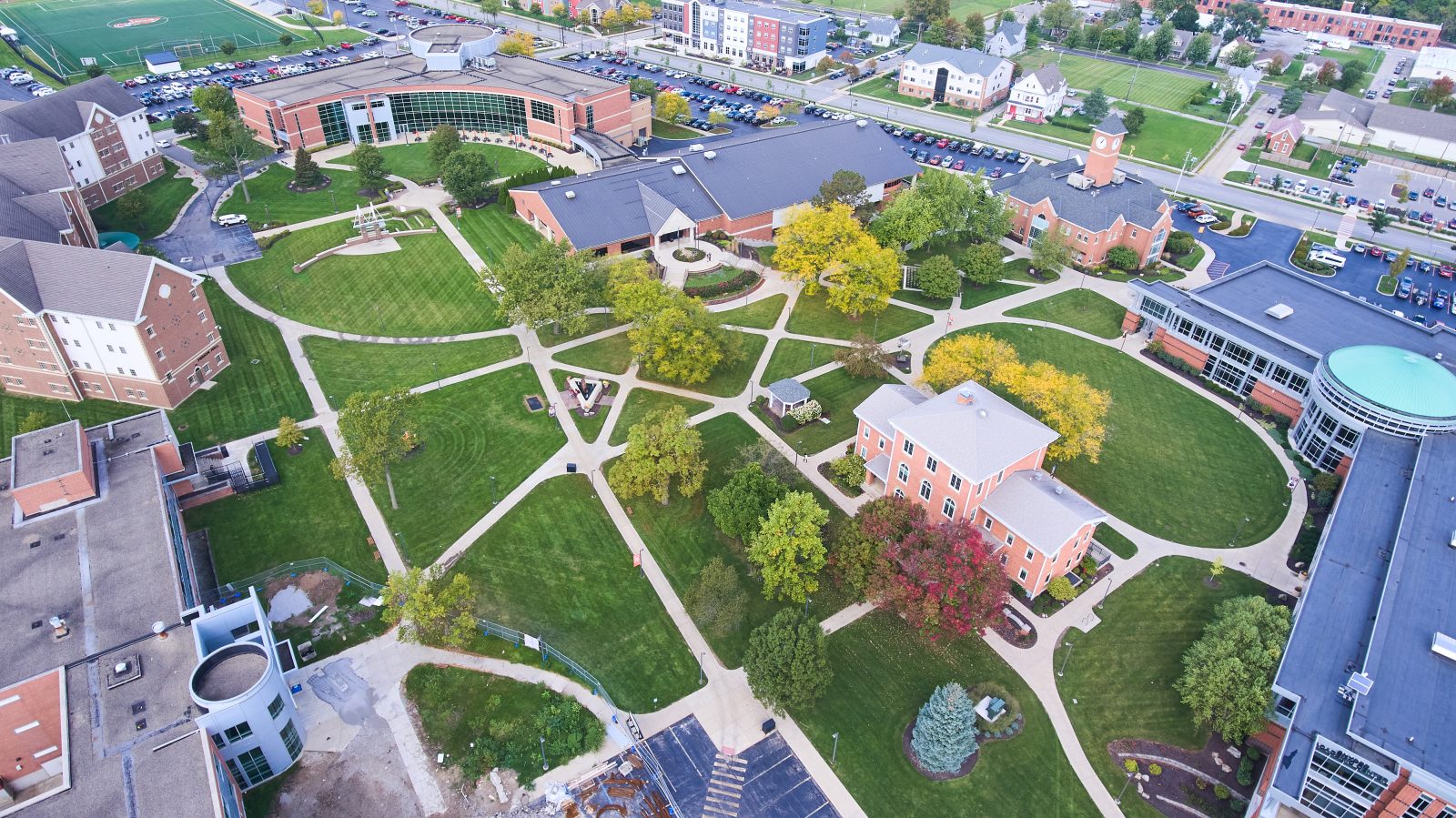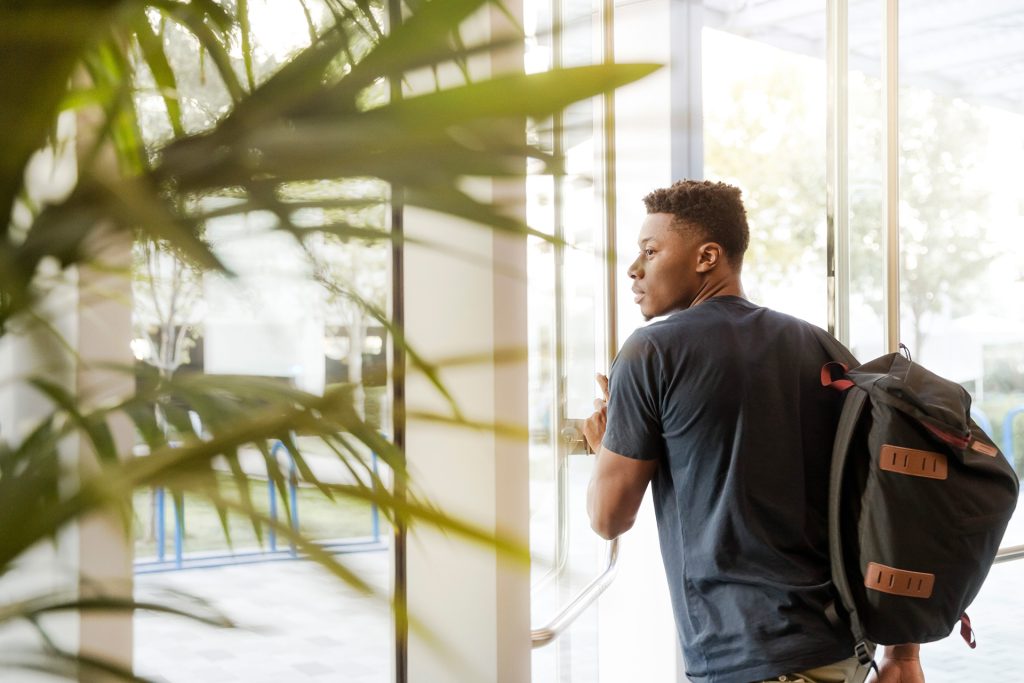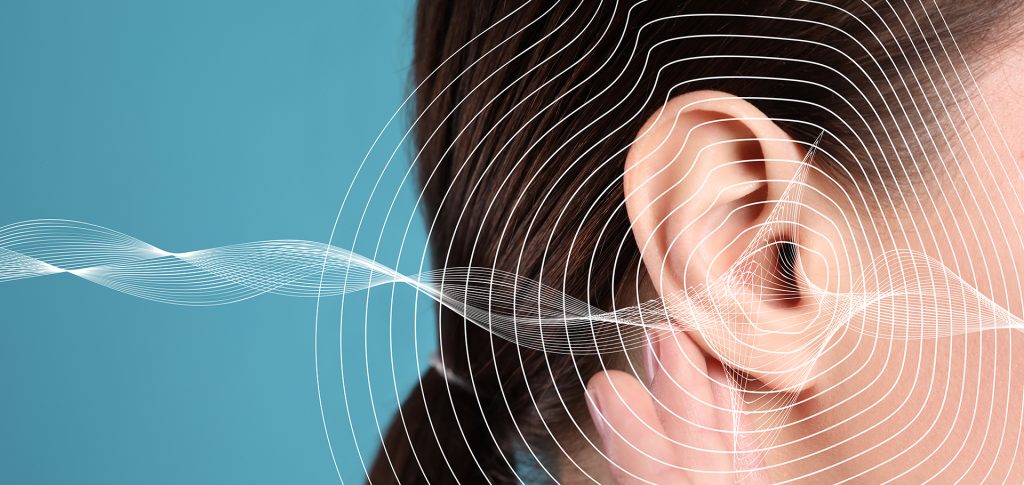As architects and designers, we’re constantly striving to create campus spaces that inspire and enhance the student experience. Spaces that are designed to meet the wants and needs of today’s students – but are we as an industry, hitting the mark? We asked our summer interns and young professionals about what works well and what didn’t meet their expectations at their respective campuses.
“The future of higher education isn’t just about what we teach—it’s about where we teach it.” – Walter “Ted” Carter, Jr., Ohio State University president
Numerous studies show that the campus appearance and the overall conditions of facilities influence a student’s decision to attend their chosen higher education institution. A survey conducted in 2022 by College Pulse showed 63% of students (chart below) reporting that campus facilities factored into their college choice. At the same time, higher education institutions are vying for fewer students and competition is fierce. But, what factors of a campus’ appearance really matter to students?
I sat down with our summer interns and new hires who are recent graduates to hear directly from them. These individuals attend or have attended various two- and four-year institutions and were happy to share their thoughts and experiences.
During our conversations, they shared what spaces they preferred, what fell short of expectations and what features they wished their campuses had. The interviewees represent a good cross-section of higher education consumers: nine female students and four male students. Of these students, ten attend four-year institutions and three attend two-year institutions.
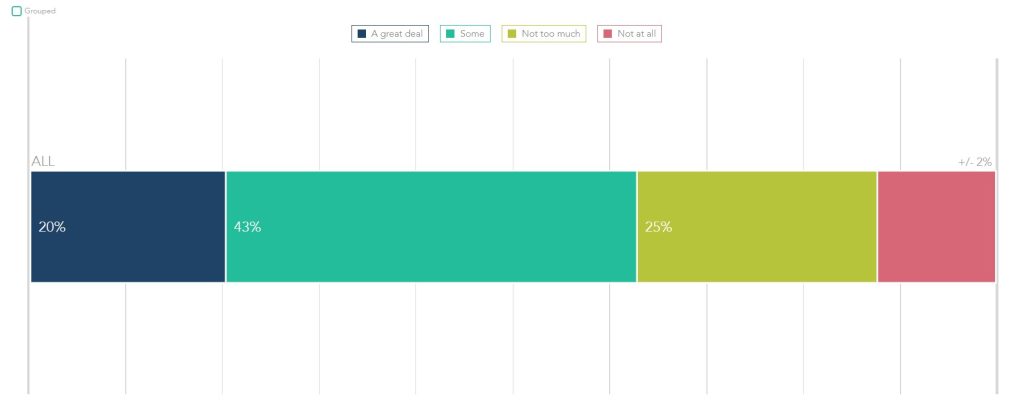
Importance of campus appearance survey
The Great Outdoors
One of the questions asked in the College Pulse survey was, “Which of the following statements are true of the outdoor spaces on your campus?” A majority of respondents to this survey answered that their campus has many nice places to sit outside and/or has many nice places to study outside.
A question I posed to our interns and recent graduates’ focused on their favorite spots on campus. Their responses mirrored the answers in the College Pulse survey. Green spaces received numerous mentions. Quads, wooded areas, arboretums, and green areas were seen as campus positives. Some mentioned specific amenities within their favorite spaces, such as picnic tables, grills, hammocks and Adirondack chairs. Our RLPSers liked that these areas provide a break from the grind of classes and studio work but also that green spaces have been shown to boost mental health. One example of an optimal outdoor space described by our alumna was a grassy area that serves as an informal meeting point where students can work, play sports, socialize, or simply be present in the community.
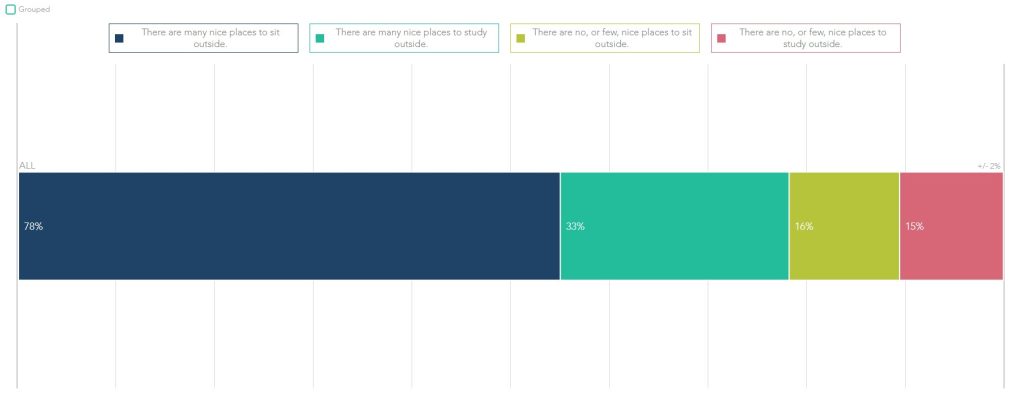
Outdoor Seating and Study Survey
Community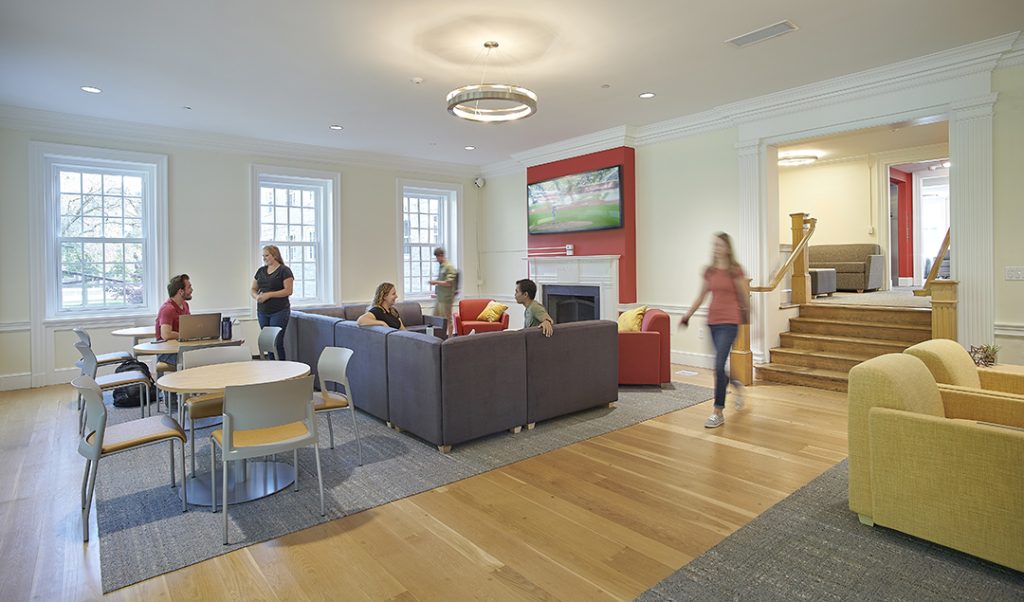
Another campus feature that came up repeatedly as a favorite were spaces that foster social interaction and collaboration. This included the outdoor spaces mentioned above along with dining halls and studio space. The design studios where these students spend most of their time earned multiple accolades. They appreciated that these spaces create “workplace-like environments” and form a community with peers and “like-minded people.”
Dining halls were another favorite place to be. These spaces were seen as a spot to meet up with friends and also act as an informal work space. Praise was given to institutions whose learning commons and libraries provide individual nooks and calm study spaces as well as group areas for work and study.
The Spaces That Miss the Mark
When posed with the opposite question, what were the least favorite spots on campus, the answers were just as interesting. Spaces on campus that compromised student comfort were the focus. These included spaces with heating and cooling issues, buildings that have windows that don’t close properly or were designed with a shading system that doesn’t function correctly, and environments with poor acoustics that make it less favorable for learning or working. One recent grad referenced the square near the center of campus that turns into a wind tunnel during cold months and is extremely hot in summer. Although the space is usually appealing, the poor level of comfort leaves the space underutilized.
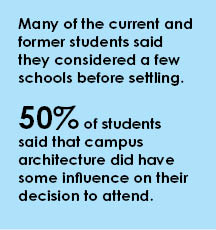 Our students and recent alumni collectively criticized buildings with inadequate space. Since they are design majors, they understood that older architecture presents challenges for creating modern learning environments, but still labeled these instances on campus as disappointing. In one instance, the lack of space resulted in design studios being split up in different buildings across campus, causing a feeling of disconnection among classmates.
Our students and recent alumni collectively criticized buildings with inadequate space. Since they are design majors, they understood that older architecture presents challenges for creating modern learning environments, but still labeled these instances on campus as disappointing. In one instance, the lack of space resulted in design studios being split up in different buildings across campus, causing a feeling of disconnection among classmates.
Difficult campus circulation and landscape elements that inhibit the user experience were noted as “obvious” details on campus that create frustration for students. Specific instances were described as steep hills with “lots of stairs,” buildings that require 15-20 minute walks, and forced routing due to construction. Instead, they want to see campus design that supports walkability while also being mindful of students living off-campus and the campus transportation needs.
Safety concerns was another area that participants said made parts of campus less than ideal. Broken down spaces, graffiti, along with areas that tend to hold water and flood resulted in spaces that felt insecure and were avoided.
The Wish List
For the final question, the students and alumni had the opportunity to share what they want to see on their respective campuses and what could have made a bigger impact for them when they were 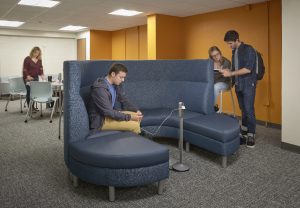 choosing their institution of higher learning.
choosing their institution of higher learning.
- Technology: In today’s digital world being connected, and staying connected, is critical. Our interviewees want more outlets and charging stations available in classrooms, studio spaces, gathering areas… and outdoors. They also want additional equipment for specialized programs like architecture or digital media. Coordinating access to equipment is difficult when many students have only one or two tools to share.
- Biophilic Design: Like many of today’s students, our RLPSers want spaces that blur the line between indoors and outdoors. They like large windows that allow natural light into buildings and enable those inside to see out. They also want typical conveniences provided indoors to exist in their outdoor spaces as well. This includes tables for eating or studying along with outlets and charging stations.
- Interior Updates: Our interviewees value welcoming and inspiring spaces with personality. They want spaces with artwork and color; spaces that don’t feel institutional. Comfortable seating and areas that support individual study and work such as nooks and quiet areas, as well as rooms that are equipped for small group collaboration and larger community spaces that can host events were mentioned as impactful for any potential student.
- Additional Facilities: With classes occurring throughout the day and class projects being worked on at all hours, dining options should meet those needs, too. A majority of our respondents would like dining venues to have additional hours, including weekends and late nights. Suggestions also included coffee shops, grab-and-go markets, and convenience options woven into campus. More studio space along with different levels of workspaces were mentioned as well as dorm upgrades and parking improvements. And, for times when they aren’t studying, they would like additional and better quality gyms available. Recommendations ranged from upgrading present facilities, to adding athlete-only gyms.
Campus Design Going Forward
The preferences of our interviewee’s were not shocking or suggesting a shift in how we should be approaching campus architecture but they certainly are a reinforcement of the root of the “why” behind campus projects—to create spaces that stimulate learning, inspire personal growth and serve the community of each institution. They want spaces that support learning and work while also fostering community and belonging.
About the Author

